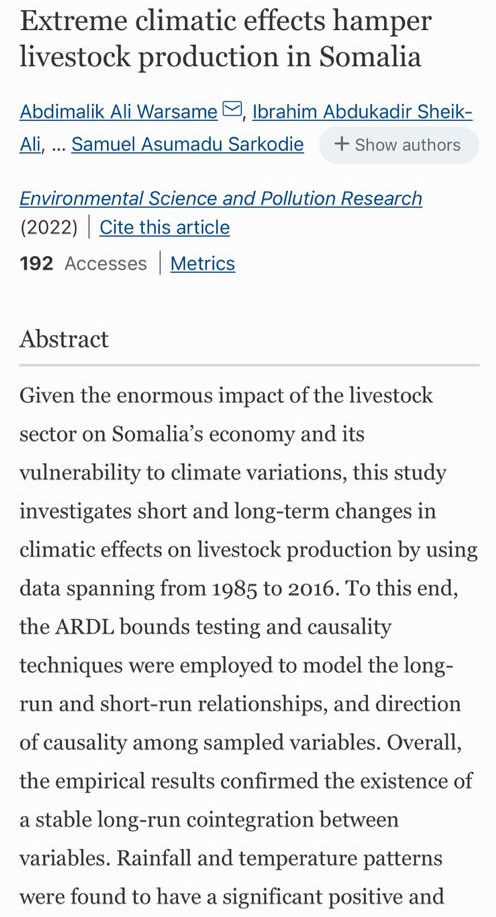
Extreme climatic effects hamper livestock production in Somalia
- Post by: admin
- May 26, 2022
- No Comment
Abstract
Given the enormous impact of the livestock sector on Somalia’s economy and its vulnerability to climate variations, this study investigates short and long-term changes in climatic effects on livestock production by using data spanning from 1985 to 2016. To this end, the ARDL bounds testing and causality techniques were employed to model the long-run and short-run relationships, and direction of causality among sampled variables. Overall, the empirical results confirmed the existence of a stable long-run cointegration between variables. Rainfall and temperature patterns were found to have a significant positive and negative impact on livestock production both in the long run and short run, respectively. The observed carbon dioxide emissions have no significant impact on livestock production in the long run but enhance livestock production in the short run. Interestingly, growth in rural population declines livestock production in the long run but not in the short run. Besides, a unidirectional causality is confirmed from temperature to rainfall and CO2 whereas livestock production has a bidirectional causal relationship with rainfall and temperature. While CO2 emissions granger cause livestock production, a unidirectional causation is observed from rural population to temperature and livestock production. This study suggests adaptation and mitigation policies that combat the negative consequences of climate change.
Data availability
The datasets used and/or analyzed during the current study are available from the corresponding author on reasonable request.
